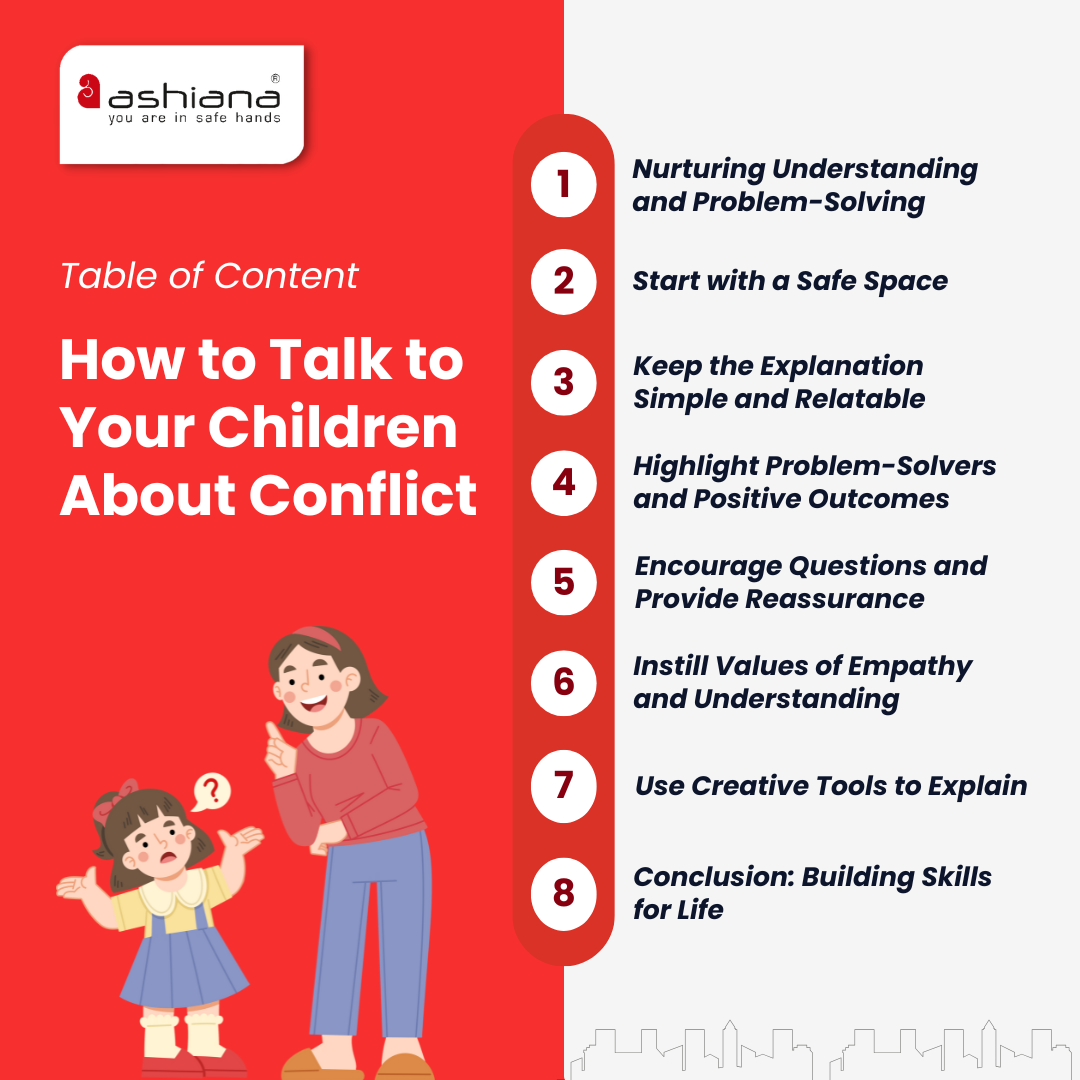

Start with simple, age-appropriate language like, “Sometimes people don’t agree, but they can work together to solve the problem.” Emphasize the positive aspects of resolving disagreements and focus on solutions rather than problems.
Acknowledge their feelings and let them know it’s normal to feel upset. Reassure them by discussing strategies to handle conflicts calmly and positively, such as talking things out or asking for help from a trusted adult.
Use relatable stories or role-playing to show how understanding another person’s perspective can help resolve disagreements. Encourage them to think about how they can be kind and supportive during conflicts, both in their actions and words.
Ashiana, Ashiana Housing build homes. Homes surrounded by vast green spaces and fresh breeze. Homes cocooned in secured gated complexes. Homes where futures are forged and there are opportunities to grow. And Homes in environments brimming with healthy activity, trust and respect. At heart, we build communities with care.
Other posts by Ashiana
Join 1000+ of fellow readers. Get expert real estate knowledge straight to your inbox absolutely free. Just enter your email address below.